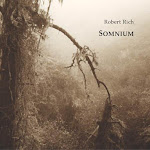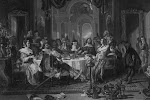The Rubaiyat of Omar Khayyam -1916


The Book of Rubies - 1866


 Both of these books were $20. The second one, "The Book of Rubies" isn't in the greatest condition, as you can see on the spine here, but the front more than makes up for it.
Both of these books were $20. The second one, "The Book of Rubies" isn't in the greatest condition, as you can see on the spine here, but the front more than makes up for it.









 Both of these books were $20. The second one, "The Book of Rubies" isn't in the greatest condition, as you can see on the spine here, but the front more than makes up for it.
Both of these books were $20. The second one, "The Book of Rubies" isn't in the greatest condition, as you can see on the spine here, but the front more than makes up for it.
 I've decided to post some of my old jungle art. Taking one good look at this I can see a lot of room for improvement. What I notice most is a lack of familiarity with an actual jungle environment. Yeah...I can somehow see the moon through the trees, which all somehow look to be devoid of leaves. Of course, there are more details that need improving but you can probably pick them out. So yes, there is quite a lot this picture is lacking. It does inspire me though, the colours are sombre and the temple looks remote and mysterious, not foreboding...but somehow beckoning to be investigated. This was done by quickly sketching in black ink and painting with watercolour.
I've decided to post some of my old jungle art. Taking one good look at this I can see a lot of room for improvement. What I notice most is a lack of familiarity with an actual jungle environment. Yeah...I can somehow see the moon through the trees, which all somehow look to be devoid of leaves. Of course, there are more details that need improving but you can probably pick them out. So yes, there is quite a lot this picture is lacking. It does inspire me though, the colours are sombre and the temple looks remote and mysterious, not foreboding...but somehow beckoning to be investigated. This was done by quickly sketching in black ink and painting with watercolour.



 Perhaps it was my early childhood fascination with lego and all things creative that spurred my love of the fantasy genre. I almost hate to say the word now, its utterance conjuring all manner of archetypal individuals and locations. In reality, fantasy is much more integral to our lives than we give it credit for. Simply gazing up at the night sky impresses upon the mind a whole host of images and realities that exist only in our imagination and, with a little help from science and it’s irrevocable rationale, we can bend and mould these ideas into a working form that may echo some truth. It this what fantasy means? is it finding some truth in an idea so far flung that we need to justify it with something concrete. I hope not, but then I think fantasy is a working genre, enabling people to do anything with it.
Perhaps it was my early childhood fascination with lego and all things creative that spurred my love of the fantasy genre. I almost hate to say the word now, its utterance conjuring all manner of archetypal individuals and locations. In reality, fantasy is much more integral to our lives than we give it credit for. Simply gazing up at the night sky impresses upon the mind a whole host of images and realities that exist only in our imagination and, with a little help from science and it’s irrevocable rationale, we can bend and mould these ideas into a working form that may echo some truth. It this what fantasy means? is it finding some truth in an idea so far flung that we need to justify it with something concrete. I hope not, but then I think fantasy is a working genre, enabling people to do anything with it.



